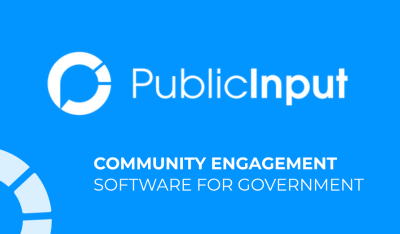The PublicInput Platform is tailor-made to facilitate collaboration between State Transportation Departments (DOT), residents, and stakeholders. Designed by communicators, data scientists, transportation planners, and local government leaders, PublicInput empowers DOTs to manage the complete engagement process. Whether it is sharing information, soliciting input, or storing data to ensure defensible decisions and documentation, PublicInput supports all phases of the engagement process
A new guide from the U.S. Department of Transportation (USDOT) defines the process of meaningful public involvement as one that “proactively seeks full representation from the community, considers public comments and feedback, and incorporates that feedback into a project, program, or plan.”
Public involvement is not an afterthought in the decision-making process, but rather a core tenet for agencies, organizations, partners, and individuals who work on USDOT funded projects . . .
– USDOT
According to the guide, meaningful public involvement is achieved through six key steps:
-
- Understand the demographics of your community
- Build durable community relationships
- Understand your communities wants and needs
- Involve a broad representation of your community
- Use the locally preferred community engagement techniques
- Document and share the impacts on decisions with the community
Each step of the recommended USDOT process has been systematically implemented within the PublicInput platform to support the needs of transportation and public involvement professionals.
To summarize how DOTs can take action on the best practices outlined in the new guide, we’ve outlined the top seven reasons DOTs choose PublicInput to ensure meaningful public involvement.
1. Demonstrating Compliance
Whether it is NEPA, Title VI, or other laws that mandate the consideration of public comments and a documented response, PublicInput is built to manage and document the entire spectrum of public involvement formats. That includes in-person and virtual meetings, email, online surveys, phone, text messages, and social media – all from one secure platform.
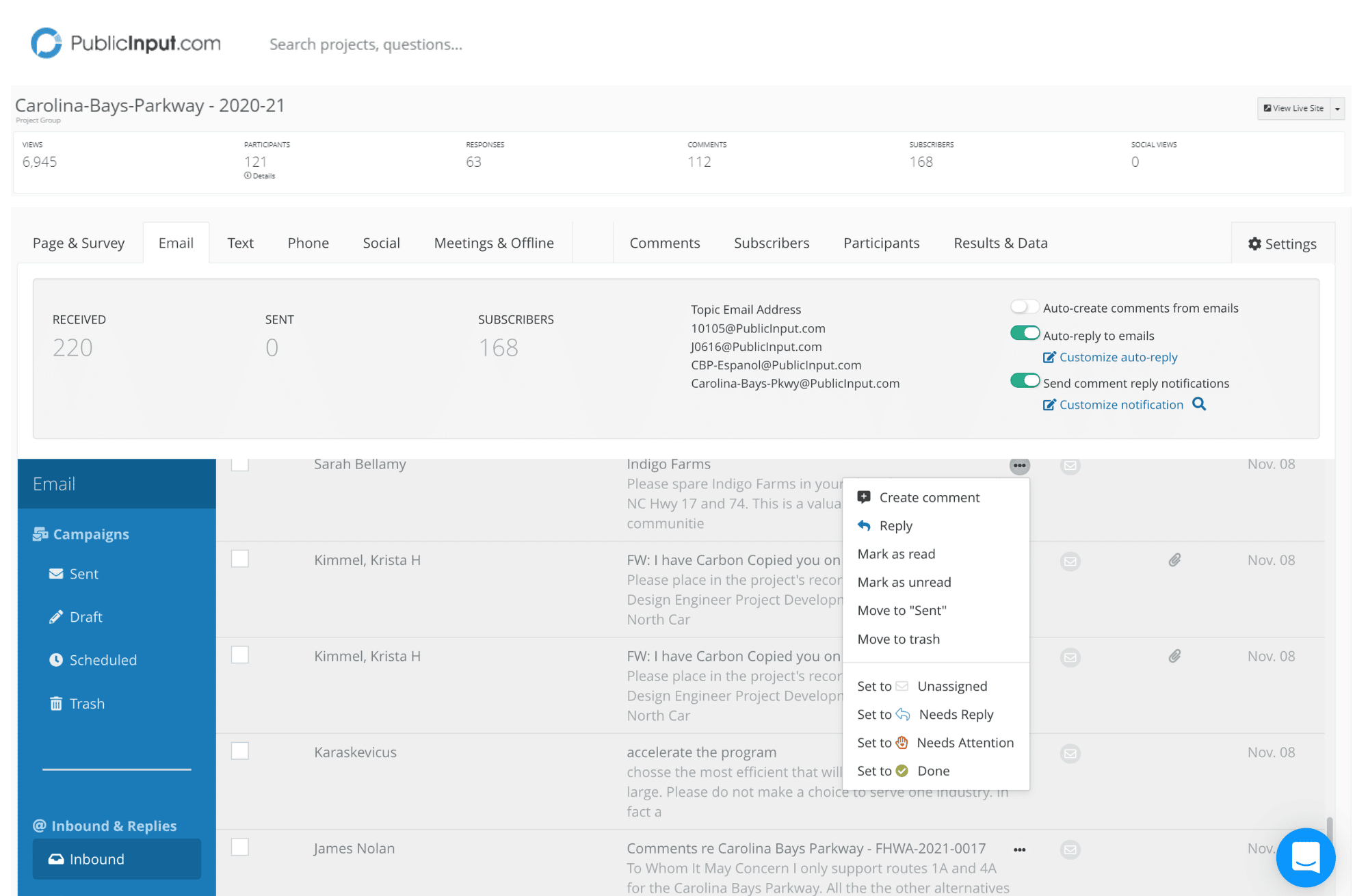
By facilitating and managing all communication channels within the same platform, PublicInput automates capturing, organizing, and reporting on data no matter how it is received. This also unlocks the ability to report and analyze data in a new light, understanding sentiment and themes in real-time. This approach ensures compliance with the following Title VI expectations:
-
-
- Clearly defining the characteristics of the target population
- Document the outreach efforts
- Document the engagement activity
- Document, communicate, and implement language accessibility measures
- Report on the effectiveness of the outreach efforts in achieving a representative sample of community
-
This approach ensures you meet these criteria every team, every consultant, every project. it also unlocks the ability to see and understand your data in real-time, helping you spot issues before they cause major setbacks and delays.
2. Efficient Project Delivery
Projects take time, but consolidating, analyzing, and responding to input shouldn’t. The PublicInput platform incorporates targeted outreach tools that ensure demonstrable outreach to (and engagement with) impacted residents before they develop a bias based on incomplete information. This ability also allows residents to:
- Learn more and contribute valuable insights
- Understand varying impacts when alternatives are presented
- Have, and even share, community awareness of a project before construction is announced
Although not a formal decision maker, stakeholders have a large role in transportation decision making – they can propel a project forward or stop it dead in its tracks. Champions often arise from stakeholder groups which not only represent the interests of local citizens, but also provide decision makers with a point of contact that can be depended upon to stay engaged. Stakeholders angry with the direction a project is taking, or frustrated by not feeling heard can . . . often resort to {leveraging} their power to halt progress . . .
–USDOT
PublicInput helps DOT planners, project/program managers, and DOT contracted consultants get ahead of these types of roadblocks. By consolidating feedback from a variety of sources the platform automates analysis so that insights and reports are always timely, streamlined, and up-to-date.
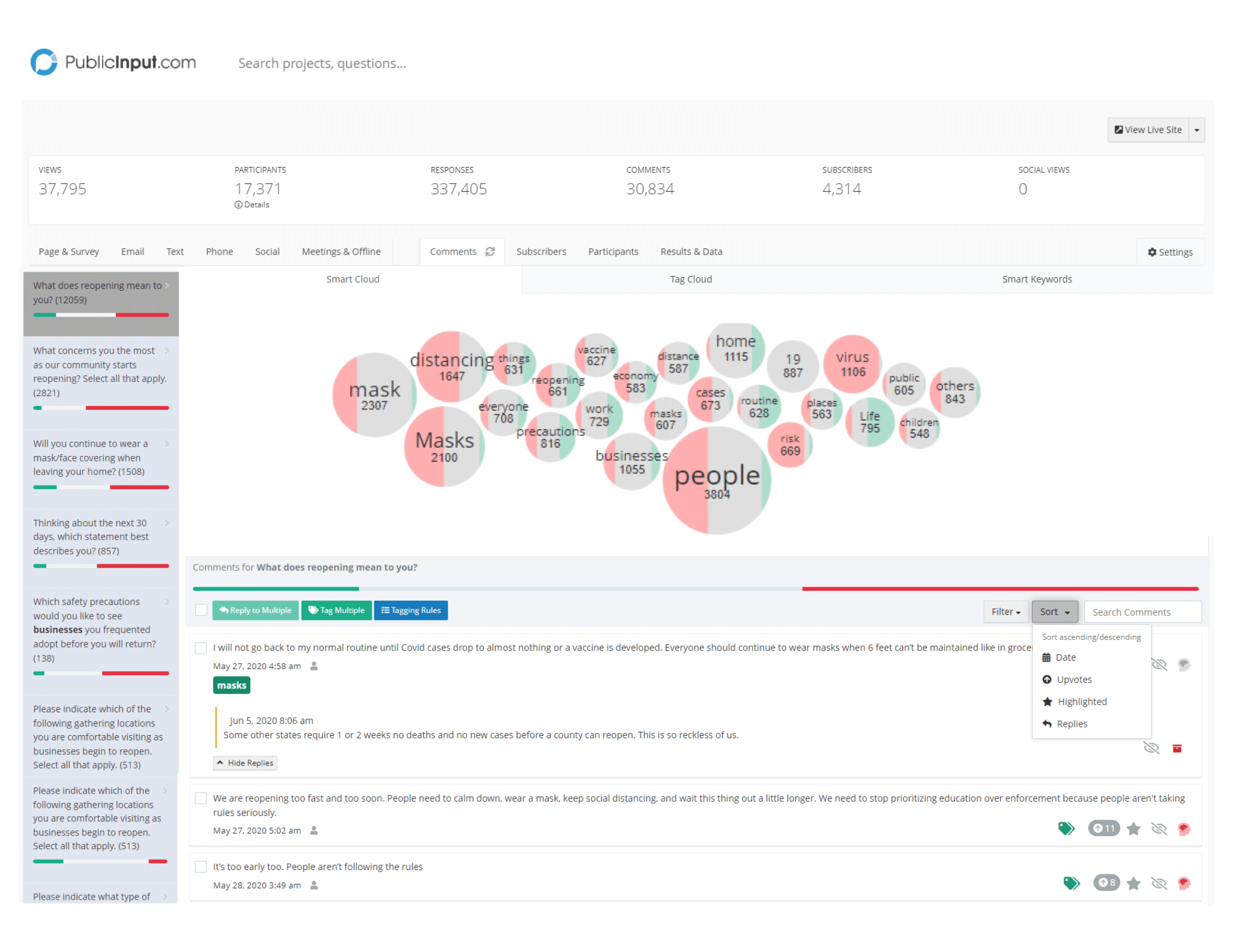
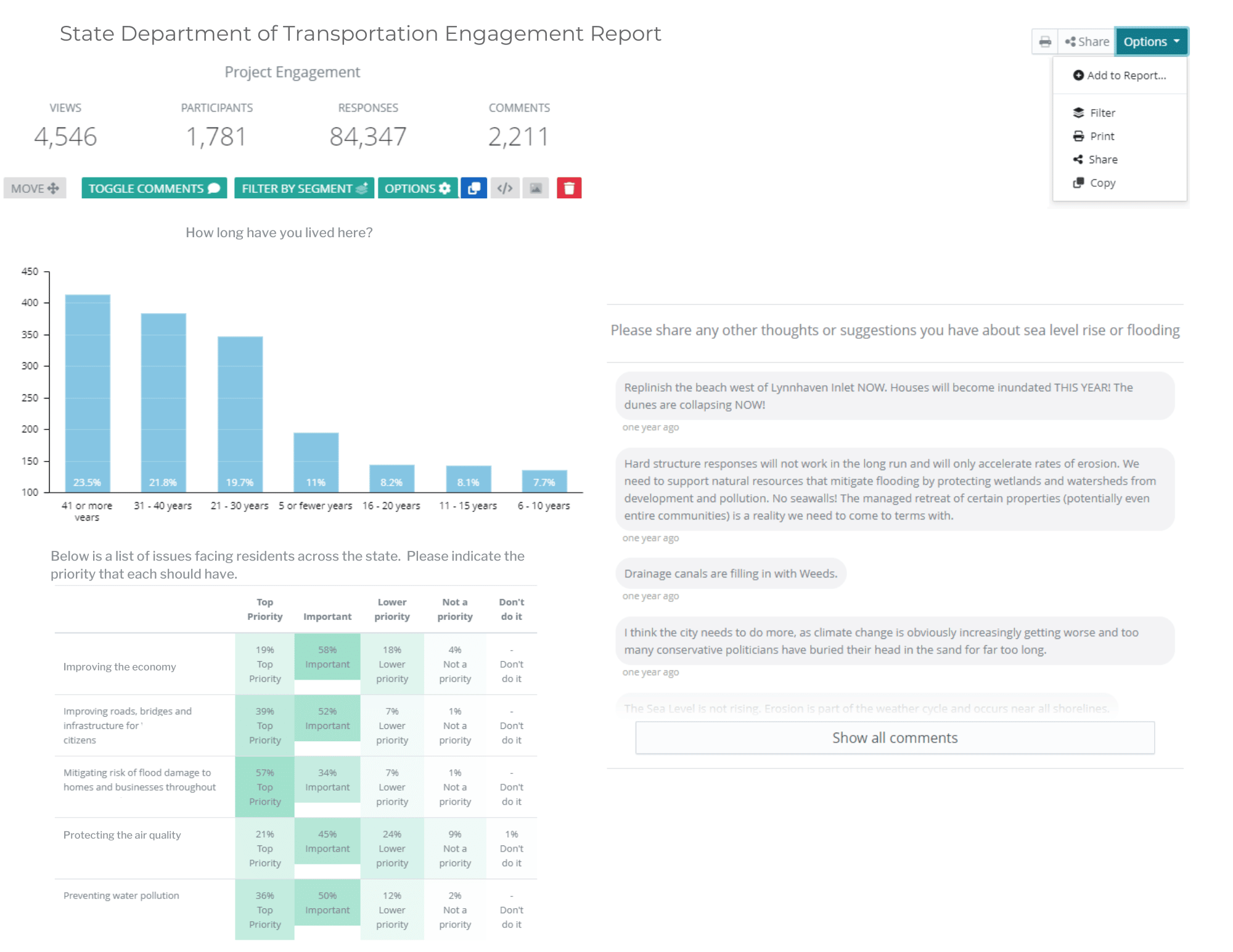
With the PublicInput geo-targeted email and social media advertising features DOTs can efficiently reach specific project area populations quickly and effectively.
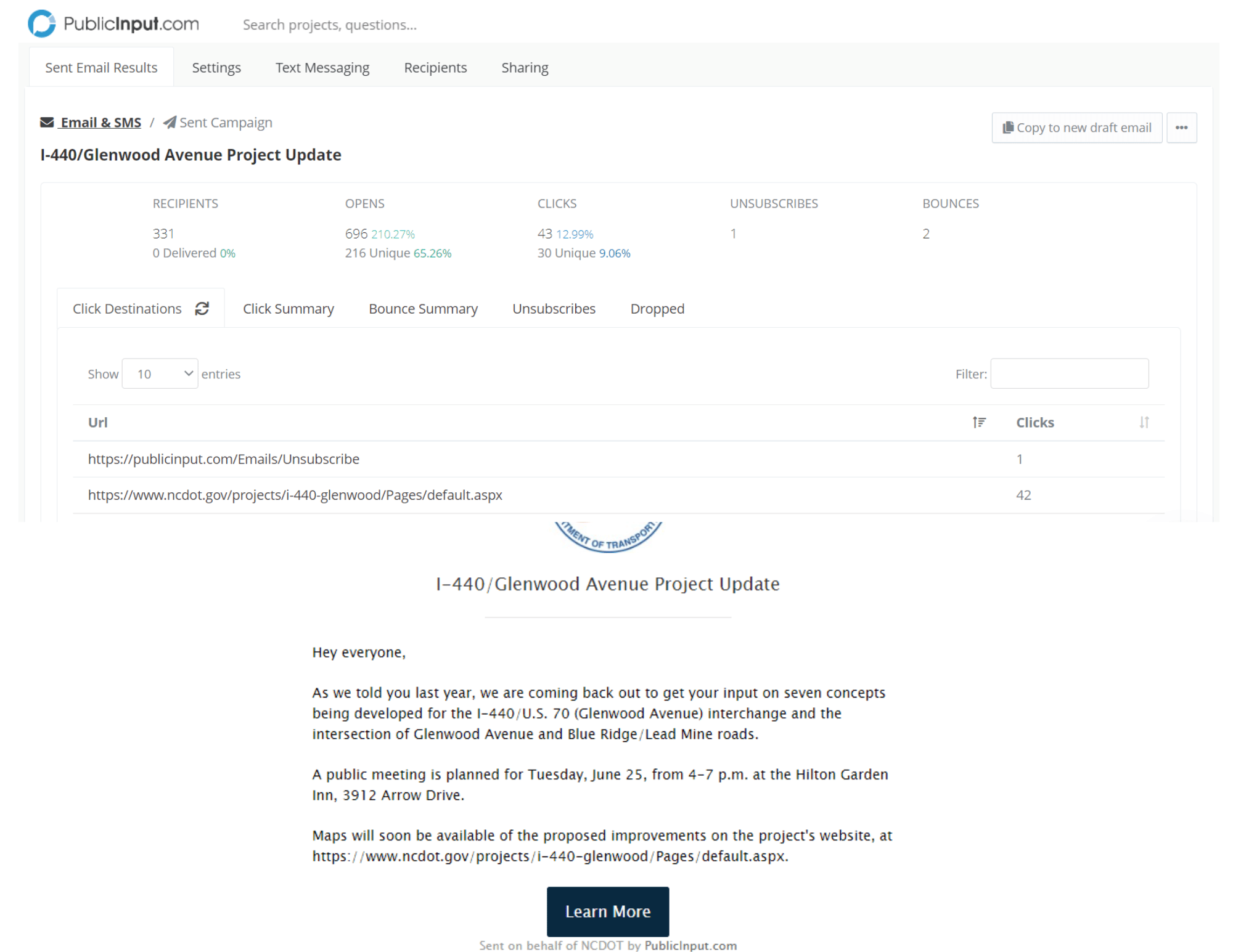
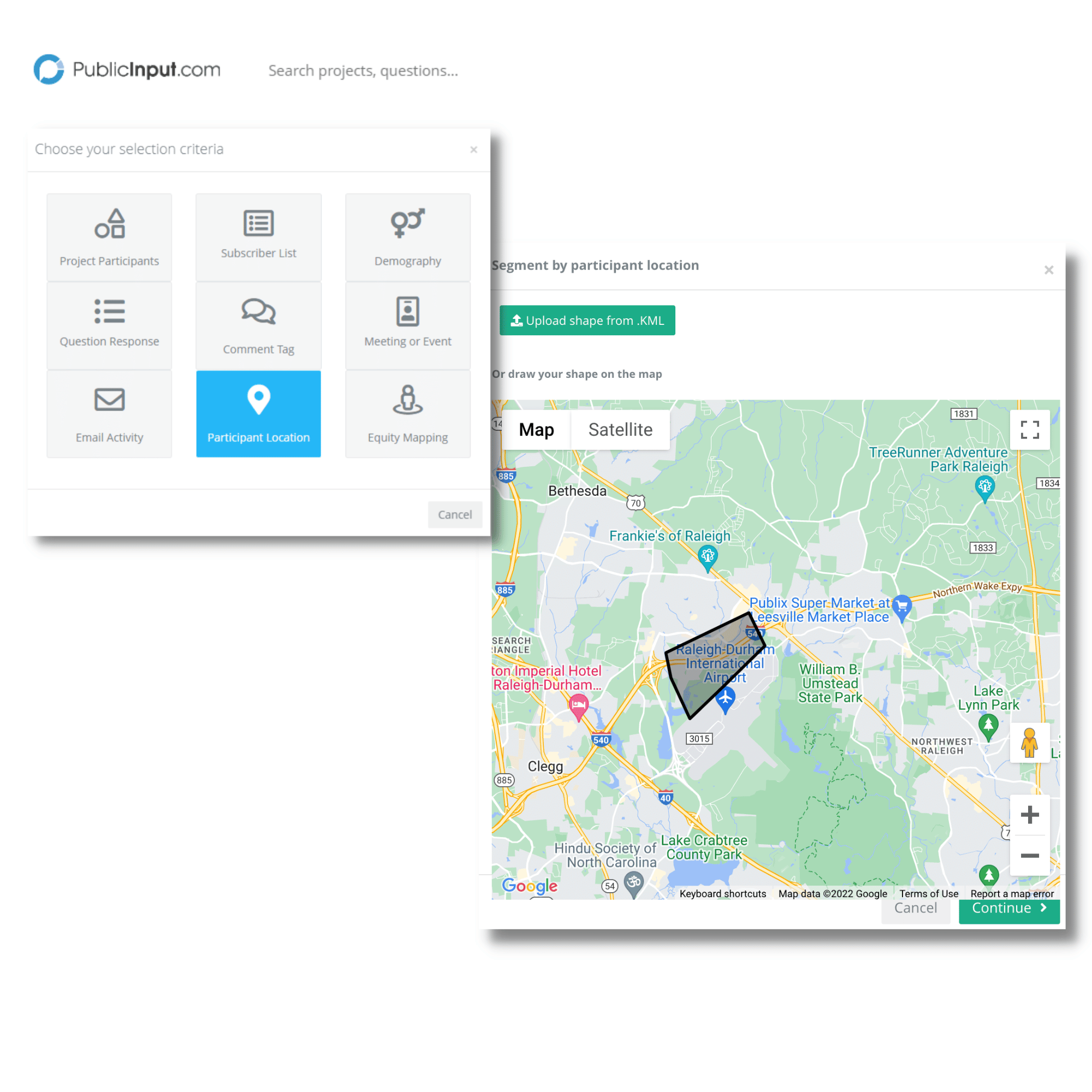
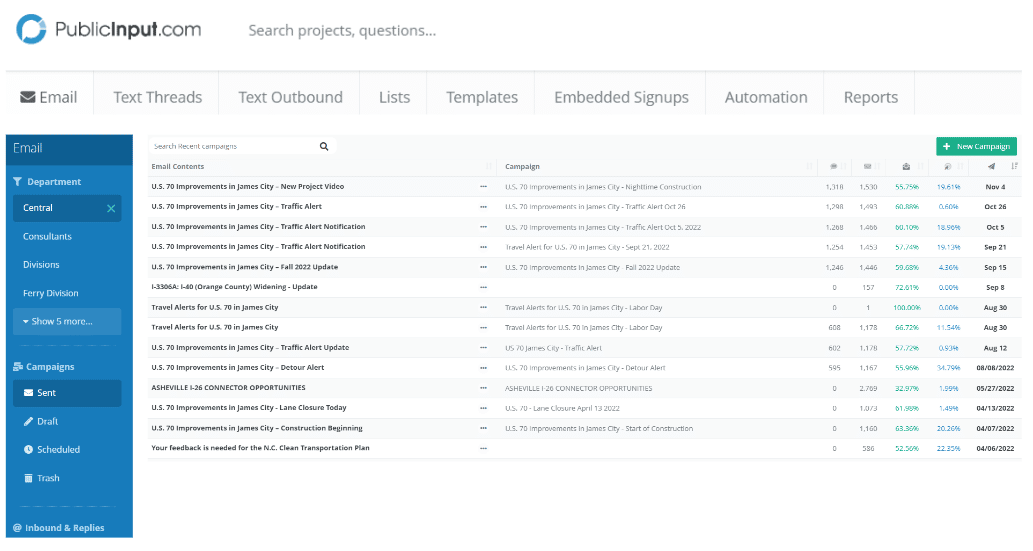
3. Representative Feedback
According to USDOT, engaging underserved groups can improve transportation for the entire community, as well as minimize or avoid potential harm from a project. When barriers to participation are lowered and the convenience of the public is prioritized over internal processes, DOT project teams become more effective at collecting unbiased and representative input from the community.
…Outreach requires an understanding of community needs to tailor public involvement plans that offer meaningful engagement opportunities and encourage underserved communities to participate in the transportation decision-making process.
– USDOT
PublicInput’s proprietary ‘Equity Mapping‘ toolkit visualizes participation data by layering reports with EPA EJScreen, Census, and custom ESRI ArcGIS information. Feedback and comments can also be exported in ArcGIS data formats for analysis, thereby helping project teams:
- Demonstrate which projects serve or impact disadvantaged communities
- Demonstrate quantifiable engagement among participants from disadvantaged communities
- Filter and analyze responses and comments from specific disadvantaged communities and target areas
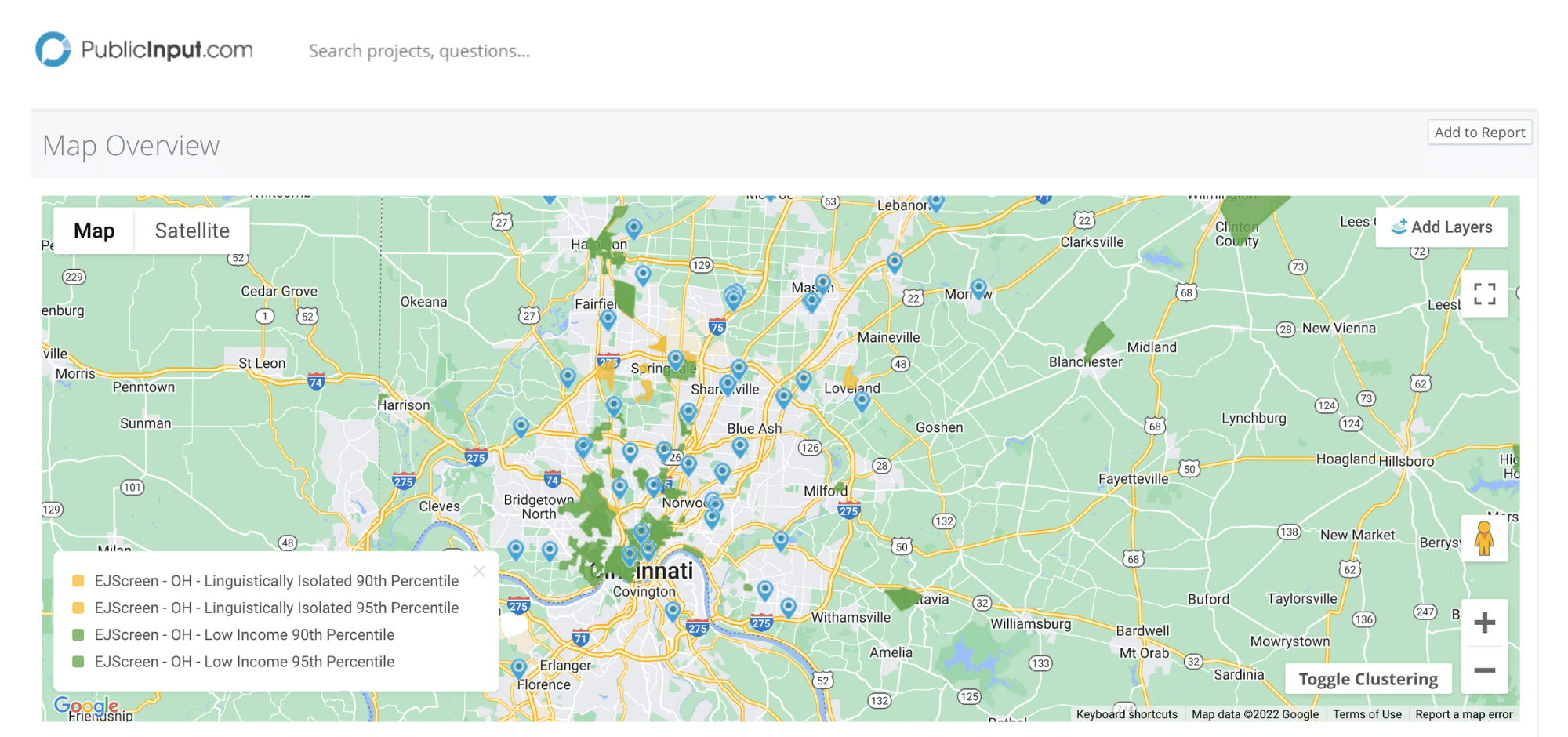
4. Enterprise Access Management and Standardization
The average DOT sponsors more than 100 projects each year, and may work with over a dozen consulting firms at any given time. Enterprise access management becomes critical for DOTs who are overseeing numerous points of access and data for their consultant run projects.
PublicInput provides a central hub to manage public involvement and ensure each firm or user works from the same performance benchmarks. This approach also means each project has data and contacts that grow inside your resident database for use in future outreach.
PublicInput administrative access management can be tailored to the way you already work. With discreet access controls at the organization, division, or project level, the platform supports simplified and secure collaboration and records retention across all your teams and projects.
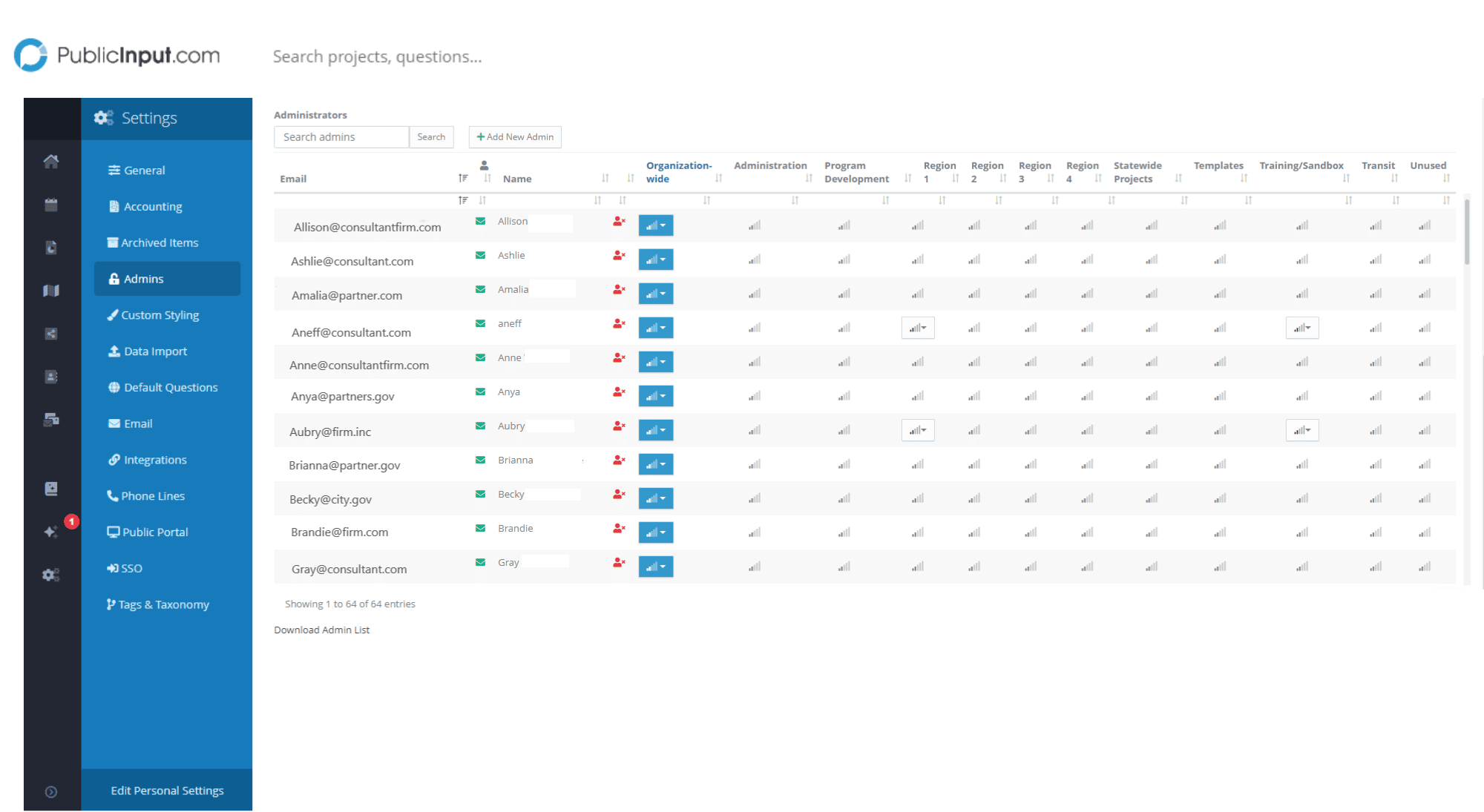
5. Ease of Implementation
DOTs and public organizations across the nation are moving away from on-premise or piecemeal solutions due to costly implementation, cybersecurity risks, frequent maintenance, and continuity concerns. PublicInput is a cloud-based solution that can be implemented in minutes, and teams can be up-and-running within days using ready-to-deploy templates for common project types, email newsletters, and standardized question formats.
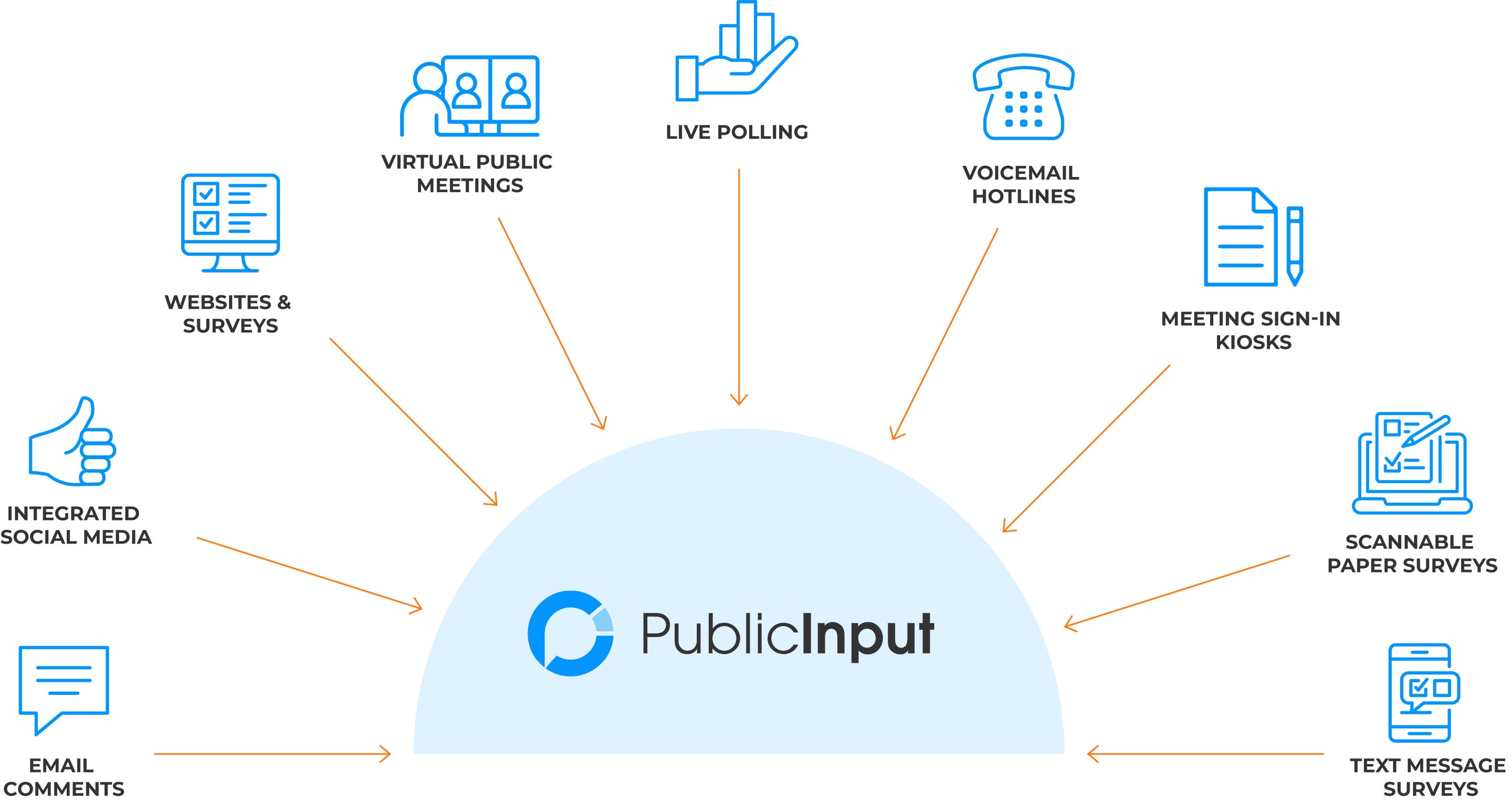
PublicInput customers are set up for success with our expert Client Success Team, which offers ongoing training and worry free support for engagement teams. Support resources include:
- Live and on-demand training options
- Live case examples
- Extensive resource library
- Easy access to our Support team via built-in chat at any time
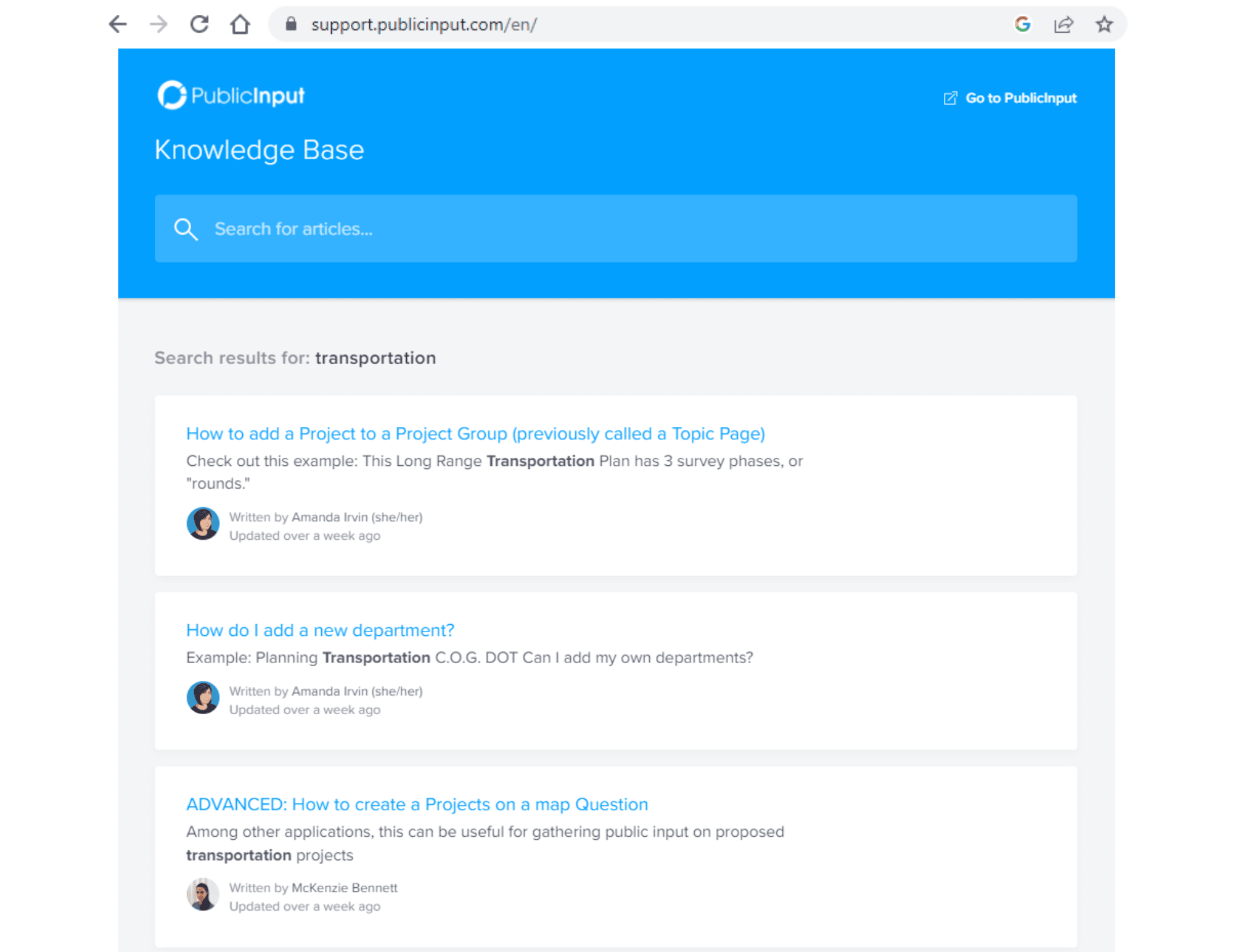
6. Data Security and Integrity
With the rise of digital government, public organizations have seen a proliferation of cyber attacks and data breaches. Legacy, on-premise and self-hosted solutions have become common targets for threat actors because their core systems are often out-of-date with the latest security standards and patches.
PublicInput is a cloud-based solution hosted on Microsoft’s secure, scalable Azure environment. It undergoes regular audits, updates, and testing – and recently received the highest available data security certification from the AICPA.
PublicInput is proud to have attained SOC 2 Type II data security compliance in accordance with the American Institute of Certified Public Accountants (AICPA) standards.

Beyond security, data integrity is a key reason DOT’s choose PublicInput. Advocacy organizations have taken to creating more sophisticated bots to mimic legitimate participants in the effort to “stuff the ballot box.” To combat this, PublicInput has a number of bot detection and fraud recognition algorithms in place to identify and mitigate these risks.
By choosing PublicInput, DOT’s immediately benefit from the protection and best practices learned from experiences with hundreds of public organizations encountering bots and spammers.
7. Increased stakeholder buy-in
According to the Federal Highway Administration (FHWA), one of the most common constraints to project delivery and exceeding budget estimates is insufficient public involvement during planning, leading to stakeholder opposition during final design.
Engaging the public early and often can also help avoid costly re-work and delays later in the project lifecycle, including potential litigation or complaints from community members.
– USDOT
The consequences of not securing early stakeholder buy-in often results in unexpected project challenges including:
- Costly project delays associated with incorporating unforeseen issues
- Last minute or reactive objection handling to address blockers from organized project opponents
- Lawsuits or complaints on the basis of insufficient public outreach
Ensuring stakeholder buy-in early and often widens “the basis of consensus for a plan or project, and the greater the consensus among all community members, the more likely a plan or project will succeed” (Public Involvement Techniques, FHWA).
Built by the Transportation Planners for the Transportation Planning Community
Founded by former transportation planning consultants, PublicInput is built to solve the challenges faced by transportation organizations and their peers in the public sector. Today the platform is utilized by 12 state DOTs and some of the largest Metropolitan Planning Organizations (MPO’s) in the country.
PublicInput is widely supported by a large and growing community of government practitioners as well as over 200 consulting firms, with a growing base of certified consultant users. It is widely known for its superior customer service and willingness to evolve the product based on the ideas and aspirations of public involvement practitioners.
Today, the platform continues to quickly evolve to meet the needs of a changing public involvement profession and the communities we serve.
Want to learn more about how PublicInput can help with statewide public involvement efforts?

